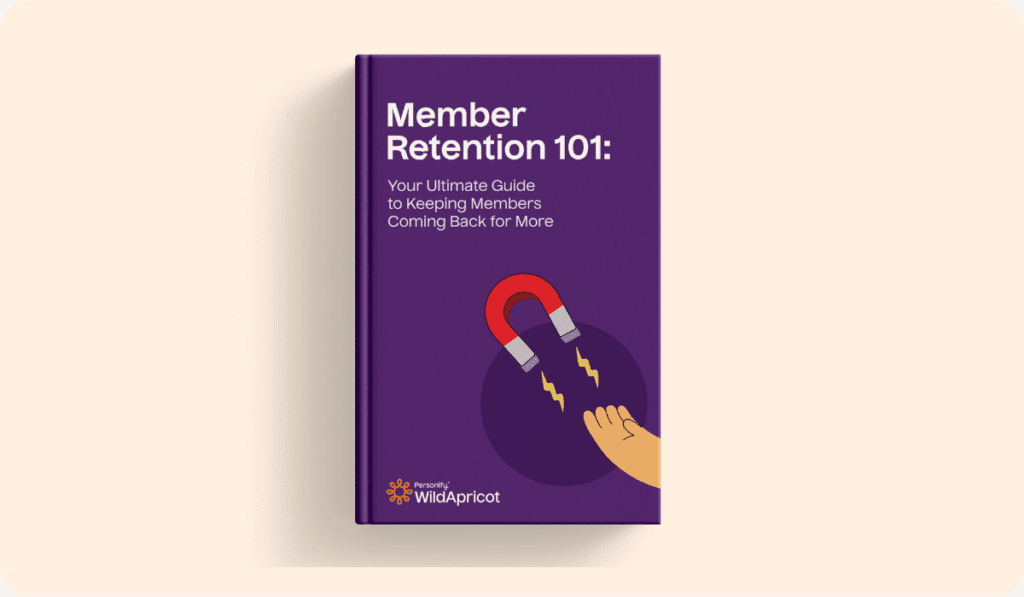This is a guest blog post by Elisa Kosarin, creator of Twenty Hats, a place for volunteer managers and other nonprofit pros to find practical, skill-building resources that they need and can use on the job right away.
If you’re experiencing low volunteer retention, you’re familiar with how much time and resources it can take to constantly market and recruit new volunteers.
But what most nonprofits don’t realize is that the problem may lie in how your candidates are interviewed.
In my experience, one simple simple change to the volunteer interview process may dramatically improve your volunteer retention.
To find out if your volunteer interview process could use some improvement, ask yourself this question:
True or False?
Are our gut feelings about a volunteer are the best predictor of volunteer success?
Since I’m asking the question – and it’s a leading question – you’ve probably guessed the correct answer: FALSE.
Seven years ago I would have answered ‘True’ when I worked for a Court Appointed Special Advocates (CASA) program. CASA programs train volunteers to advocate for abused and neglected children who are under the court’s protection. We took volunteer recruitment very seriously. Candidates were expected to complete a one-hour orientation and two interviews before even being considered for training. Even then, the staff discussed each candidate at length before making the weighty decision to accept or reject someone.
How Our “Gut Feelings” Affected Our Volunteer Retention
Despite all this rigor, our decisions often came down to our “gut feelings” about a candidate – and those gut feelings were not paying off.
We were having a tough time meeting our recruitment goals because so many trainees either dropped their cases or never took one.
This was a huge problem, because our judges wanted to see a volunteer on every single case of child abuse or neglect that entered the court.
One year, the rate of volunteers who dropped or never took cases reached a sobering 25% percent— one quarter of all the individuals that we oriented, screened, interviewed and trained.
Clearly, we were not using our time or resources well to bring qualified volunteers on board.
That 25% drop-off figure turned out to have a silver lining, because it forced us to take a good hard look at our volunteer recruitment and screening methods.
Over the course of two years, we lowered the drop-off rate to a mere 2% (that’s a 30% increase from before) by employing a new practice: behavior-based volunteer interviews.
This was incredible for us, because not only did we spend less time and resources retaining volunteers, but it also meant that each child received the most qualified advocate possible.
Read More: The Top 5 Challenges Volunteer Managers Face — And What You Can Do About It
An Old Approach We Took A Chance On
Behavior-based interviewing is not new. The method has been used in the corporate world since the 1970’s to screen job candidates, and is a standard practice in many HR departments. For various reasons, the behavior-based approach has not made its way consistently into volunteer management, even though its application has the potential to improve the efficacy of volunteer screening in many programs.
The concept behind behavior-based interviewing is pretty simple: past behavior is the best predictor of future behavior. You ask questions that require your applicants to give examples of the competencies you seek. If you need a volunteer who is reliable, you ask your prospect to describe situations where others could count on him to deliver. If a position requires good interpersonal skills, ask your candidate about a time she handled a disagreement with someone.
Questions usually begin one of two ways: “Tell me about a time when…” or “Give me an example of…” Then you assess how closely the candidate is able to answer the question. The response, or lack of an adequate response, speaks volumes about that person’s ability to handle a similar situation with confidence.
How to Implement Behavior-based Volunteer Interviewing
Perhaps the best feature of behavior-based interviewing is its simplicity. It is easy to put into practice. It is also most effective when conducted as a group. I would encourage programs to involve the entire volunteer management team in the implementation process, as multiple perspectives are important in identifying competencies, refining them, and developing the most relevant questions.
To develop behavior-based questions for a volunteer position, follow these steps:
- Start by identifying the competencies needed to succeed in the position. The best way to do that is by looking at the position description. The required competencies should be reflected in the responsibilities, skills, and qualifications required for the position. (If not, it may be time to revise your position descriptions as well).
- Your first go-round of identifying competencies will probably result in a lengthy list to review. Pare the list down to the top five competencies needed or else your interview will last for quite a long time.
- Develop at least one behavior-based question for each of the competencies.
- Start formulating questions that will elicit examples of that competency in action. Remember: most behavior-based questions begin with phrases such as, “Tell me about a time when” or “Give me an example of.”
- Create an interview form for the questions that includes an objective scoring section. The scoring method in my CASA program was very straightforward:
- 1 = Does not possess the competency
- 2 = Somewhat possesses the competency
- 3 = Possesses the competency
- Add up the scores for each question to create an overall score for each candidate. In our experience, candidates with scores of 80% or higher were almost always accepted into the program, scores below 70% were generally unqualified, and those who scored in the 70th percentile landed in the “gray area” where a candidate’s coachability becomes a consideration.
- Back up the objective scoring with written notes from the interview.
A Common Mistake To Avoid
With this method, you want to avoid hypotheticals and most yes/no questions and instead ask questions that encourage an applicant to tell a story about their actions. For example, one of my favorite questions at CASA was: “Tell me about a time when you saw someone doing something that was not right. What happened and what did you do?”
The responses to this question gave me insight into a candidate’s ability to take action in an unacceptable situation. Some applicants would address injustices directly, using a lot of diplomacy and tact, while others would avoid conflict at all costs.
Imagine how different the responses might have been if I posed the same question as a hypothetical. Most people would say something like: “If I saw someone doing something wrong, I’m sure I would call the police.”
There is no way to verify this statement. It leaves the door wide open for a candidate to respond in an equally vague and hypothetical manner, which doesn’t help you determine if they will be a good fit
The same goes for yes/no questions, which reveal little about an applicant’s character.
Better Results Over Time
You may be thinking that a behavior-based interview process will lead to fewer volunteers being accepted into your program. If that’s your guess, you are correct.
Behavior-based interviewing becomes a “quality over quantity” issue – and the results are worth it.
In my program during our first year of behavior based interviewing, we trained 52 volunteers and experienced an overall retention rate of 29%. This wasn’t especially notable, but we stuck with it and found greater success each year.
Four years later, we increased our volunteer retention to 48% while training only 26 new volunteers. Just like at my CASA program, if you stick with the process, you will find your volunteer retention figures going up, not down.
The Number One Factor When It Comes to Volunteer Screening
There are other factors that play into volunteer screening, like becoming clear on the competencies you seek and spelling out expectations, but if I had to choose just one factor, I would pick volunteer interviews. It’s one area where volunteer engagement still relies on human resources best practices for excellence.
A Resource Hundreds of Volunteer Managers Have Used to Get Started
If you think behavior-based interviewing could improve the retention of your volunteers, email Elisa for “Three Awesome Behavior-based Interview Questions” and a spot on the Twenty Hats mailing list, her weekly newsletter that goes out to hundreds of volunteer managers. The questions in her resource were developed by a CASA colleague who became an interviewing pro. With Elisa’s help, you’ll feel like a pro yourself in no time.
 Elisa Kosarin is a nonprofit professional with 20 years’ experience in leadership, volunteer management, and marketing. She’s the creator of Twenty Hats, a place for volunteer managers and other nonprofit pros to find practical, skill-building resources that they need and that they can use on the job right away.
Elisa Kosarin is a nonprofit professional with 20 years’ experience in leadership, volunteer management, and marketing. She’s the creator of Twenty Hats, a place for volunteer managers and other nonprofit pros to find practical, skill-building resources that they need and that they can use on the job right away.









